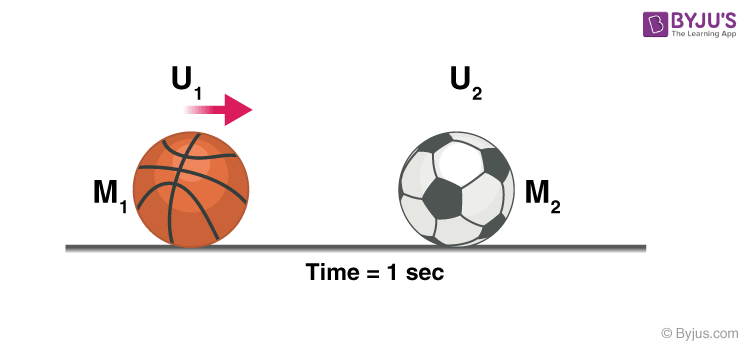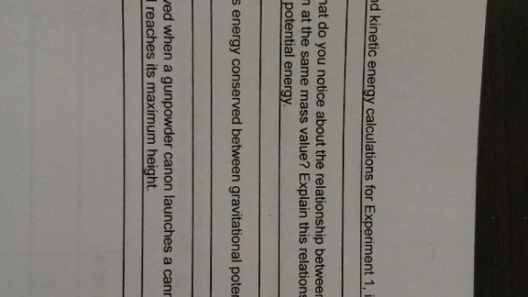The laws of physics govern the universe and provide the bedrock upon which our understanding of nature is built. Among these laws, the principles of conservation of momentum and conservation of energy stand out as paramount. Each law encapsulates profound truths about how systems interact, yet their intrinsic connection often invites deeper inquiry.
At first glance, conservation of momentum and conservation of energy may appear to be disparate concepts. However, their interplay reveals an elegant synergy that underscores the conservation principles that shape our reality. This discourse explores how these phenomenological laws converge, shedding light on their unified importance in various physical contexts.
To commence, let us define the laws themselves. The law of conservation of momentum dictates that in a closed system, the total momentum remains constant if no external forces act upon it. This principle can be derived from Newton’s second law of motion, which posits that the change in momentum of an object is proportional to the net force acting on it.
Conversely, the law of conservation of energy asserts that the total energy in an isolated system is constant. Energy can neither be created nor destroyed; it merely transforms from one form to another. These forms can include kinetic energy, potential energy, thermal energy, and more. The interconnectedness of these two laws invites scrutiny: how do they complement one another, and what implications does that have for physical systems?
To elucidate the nexus between momentum and energy, we must delve into the mechanical context. Consider a system where two objects collide. The momentum before the collision is equal to the momentum after the collision for a closed system. However, energy may not exhibit such straightforward behavior. For instance, in elastic collisions, both momentum and kinetic energy are conserved, allowing for a harmonious relationship between the two laws. In inelastic collisions, momentum is still conserved, but kinetic energy is transformed into other forms, like sound or heat.
This transformation is significant. It highlights how conservation of momentum can coexist with energy dissipation. When two cars collide, the crunching metal and scattered debris are manifestations of energy conversion. While the momentum of the vehicles remains consistent, kinetic energy dissipates into forms that may not be readily observable. Understanding this dynamic paints a fuller picture of the event, illustrating the versatility of physical laws.
The exploration of momentum and energy conservation extends beyond classical mechanics into fields such as thermodynamics and quantum physics. In thermodynamics, for instance, the principles illuminate how heat can be viewed as energy in transit. Heat exchange can affect the momentum of particles in a system, showcasing how energy alteration informs impulses on a molecular level. This concept becomes particularly salient in discussions about climate change and the increasing entropy of our atmosphere.
Moreover, on a quantum scale, particles are perpetually exchanging energy in the form of photons. As these particles interact, they adhere to both conservation laws in ways that underscore their interdependence. The relationship compels us to reassess how we perceive particle interactions, as momentum and energy fluctuations govern even the tiniest components of our universe.
Thus far, the exploration has predominantly centered around classical and modern physics, yet the implications reverberate through practical applications, particularly in technology and environmental science. Innovations in renewable energy sources integrate an understanding of these conservation principles. Wind turbines, for example, convert kinetic energy from moving air into electrical energy. Here, both conservation laws are pivotal—a wind turbine utilizes the momentum of air to generate energy without the loss of total momentum within the system.
Furthermore, electric vehicles exemplify this synergy in motion. Regenerative braking systems harness kinetic energy during deceleration, converting it back into usable energy, which highlights a practical application of energy conservation while maintaining momentum. Such technologies not only exemplify the principles at play but also promise sustainable solutions in mitigating climate change. Engineers harness the potential of momentum and energy conservation to innovate systems that are efficient, resilient, and environmentally friendly.
As society grapples with climate change, understanding these physical laws offers a fresh perspective. The realization that momentum and energy are not isolated constructs but interwoven principles that can inform sustainable practices emphasizes a critical shift in methodology. Harnessing these principles opens avenues for revolutionary approaches to energy efficiency and resource conservation.
In summary, the connection between conservation of momentum and conservation of energy is a fascinating manifestation of the interdependence of physical laws. Their marriage illustrates a cohesive understanding of natural phenomena. Rather than viewing these concepts separately, recognizing their interactions not only enriches our scientific foundation but also provides a pathway to innovative solutions for our planet’s pressing challenges.
This synthesis does not merely serve academic curiosity; it lays the groundwork for practical applications that can influence policies, technologies, and ultimately the future trajectory of our environment. The integration of these conservation laws urges us not only to ponder the mechanics of our universe but to act decisively in preserving it. Harnessing the synergy of these principles is not just an intellectual pursuit; it calls for a commitment to promoting sustainable practices that respect the delicate balance of our ecological systems.








